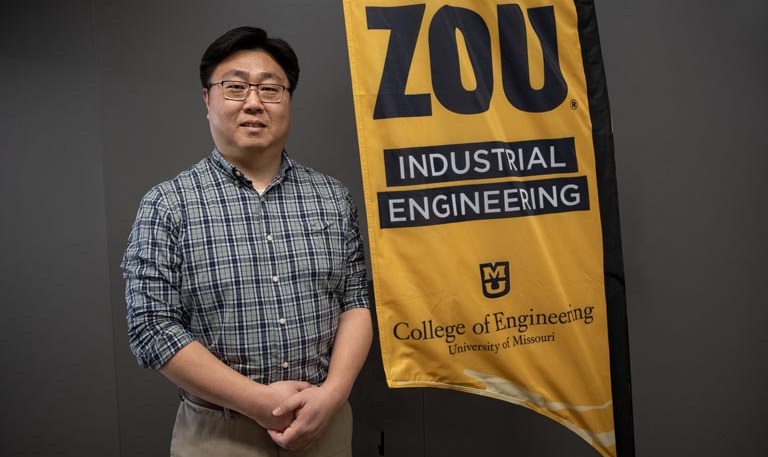February 11, 2025
Assistant Professor Hyeong Suk Na contributed his expertise to a project aimed at resolving deficit issues for the Texas 9-1-1 Alliance.

Data can be messy. Think rolling dice or the stock market. It’s hard to reliably predict what’s coming next. But if you can, the payoffs can be huge, especially when those payoffs can save lives.
Enter Hyeong Suk Na, an assistant professor in the Department of Industrial and Systems Engineering at Mizzou. He’s an expert in stochastic optimization and machine learning, which looks at randomness in real-world data to estimate future needs and impacts.
Na has partnered with researchers from the University of Cincinnati and Texas Tech University to solve a stochastic puzzle for the Texas 9-1-1 Alliance, allowing them to rescue their services from a fiscal disaster.
“Texas faces a growing deficit in 911 funding,” Na said. “In 2022, the deficit was $75.9 million. It’s projected to grow to $112.9 million by 2027, exceeding projected revenue by 48%.”
Like many other states, Texas funds the infrastructure and operations of its 911 call centers in part with fees levied on telecommunication services. The Texas wireless service fee is $0.50 per line per month and has remained at that level since 1997.
“Only seven states charge a wireless 911 fee of $0.50 or less per month,” Na said.
Revenue from that fee is dropping as more and more Texans cut their cords. At the same time, demand for 911 services in the state is rising.
Funding Next-Generation 911
Na used stochastic optimization and machine learning to analyze the uncertainty in the number of 911 calls, the demand for services, and how changes in fees will impact funding.
The outcome of the research was a recommendation to increase the wireless service fee to $0.75 per month. Such an increase would support the transition to Next Generation (NG) 911, which will allow users to send multimedia.
“People will be able to send photos, videos and texts to 911, where officers can share such data with first responders and other agencies, improving location accuracy and speed of emergency responses,” Na said.
Further data indicates that many Texans are willing to pay more to support the services. In a representative survey conducted by the researchers in October 2024, 78% supported the proposed fee increase.
“These findings provide policymakers with the evidence they need to assess the sustainability of 911 funding in Texas and inform policy options for adjusting the fee,” Na said.
States like Missouri, which does not charge a wireless fee, could take a similar approach to deciphering the data of their own 911 services.
Na intends to share the research with the Missouri 911 Service Board.
“These findings should be very interesting to the Missouri 911 Service Board,” Na said. “If we institute a service fee, then we can potentially expand 911 services to counties that currently don’t have it.”
Na was a co-investigator on Texas 9-1-1 Funding Analysis and Public Opinion Survey, along with principal investigator Rob Grace, University of Cincinnati, and co-investigators Wesley Wehde and Changwon Son, Texas Tech University. The research was sponsored by the Texas 9-1-1 Alliance.
At Mizzou Engineering, we apply research to solve real-world issues. Learn more about our work.